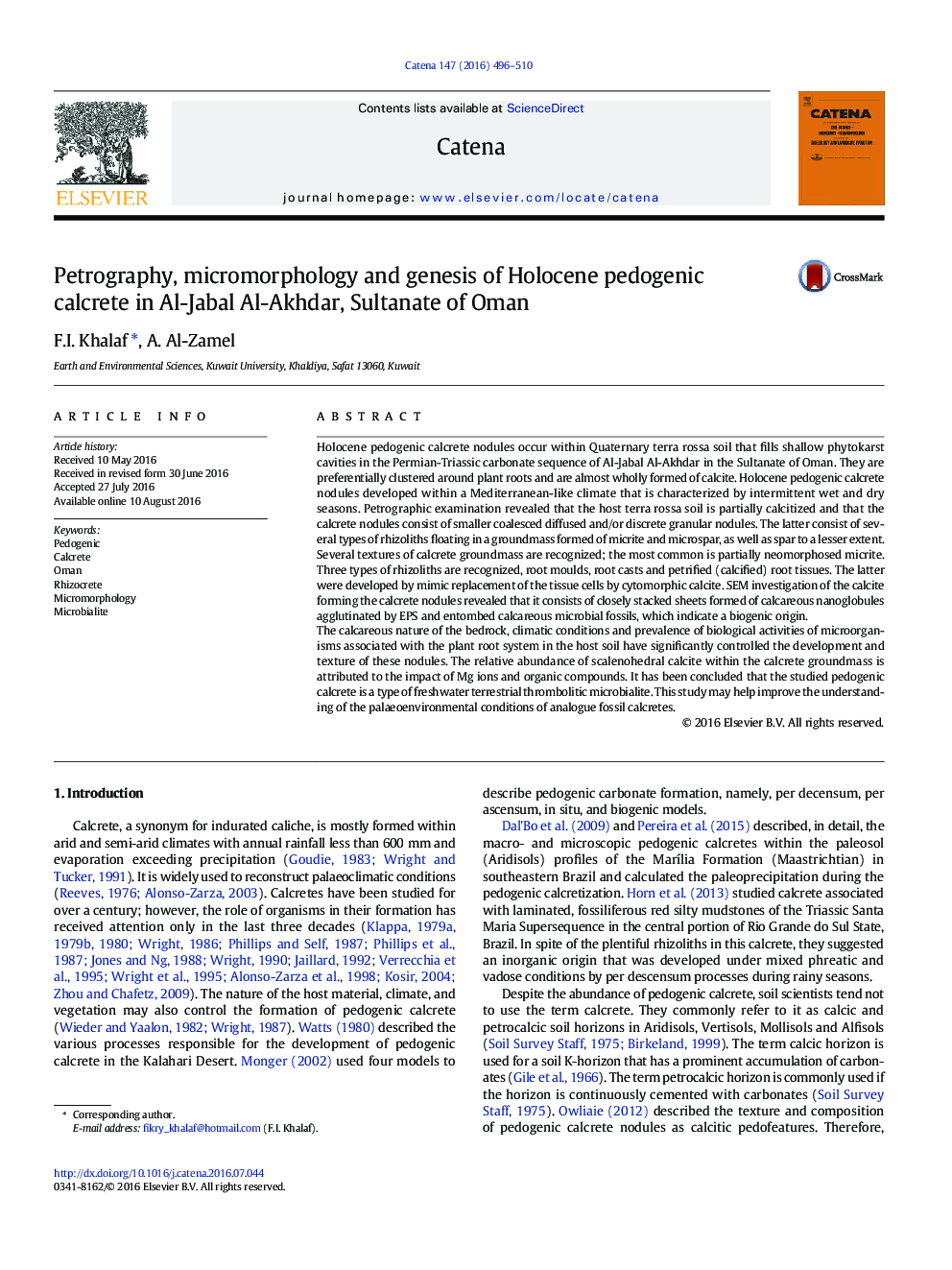| کد مقاله | کد نشریه | سال انتشار | مقاله انگلیسی | نسخه تمام متن |
|---|---|---|---|---|
| 6407760 | 1629205 | 2016 | 15 صفحه PDF | دانلود رایگان |
- Holocene pedogenic calcrete occurs in terra rossa soil clustered on plant roots.
- It is composed of rhizoliths, fossilized microorganisms and biogenic calcite.
- Nature of the bedrocks, climate and biological activity controlled its development.
- It is considered as terrestrial thrombolitic microbialites.
- It is formed during successive wet and dry seasons within a Mediterranean climate.
Holocene pedogenic calcrete nodules occur within Quaternary terra rossa soil that fills shallow phytokarst cavities in the Permian-Triassic carbonate sequence of Al-Jabal Al-Akhdar in the Sultanate of Oman. They are preferentially clustered around plant roots and are almost wholly formed of calcite. Holocene pedogenic calcrete nodules developed within a Mediterranean-like climate that is characterized by intermittent wet and dry seasons. Petrographic examination revealed that the host terra rossa soil is partially calcitized and that the calcrete nodules consist of smaller coalesced diffused and/or discrete granular nodules. The latter consist of several types of rhizoliths floating in a groundmass formed of micrite and microspar, as well as spar to a lesser extent. Several textures of calcrete groundmass are recognized; the most common is partially neomorphosed micrite. Three types of rhizoliths are recognized, root moulds, root casts and petrified (calcified) root tissues. The latter were developed by mimic replacement of the tissue cells by cytomorphic calcite. SEM investigation of the calcite forming the calcrete nodules revealed that it consists of closely stacked sheets formed of calcareous nanoglobules agglutinated by EPS and entombed calcareous microbial fossils, which indicate a biogenic origin.The calcareous nature of the bedrock, climatic conditions and prevalence of biological activities of microorganisms associated with the plant root system in the host soil have significantly controlled the development and texture of these nodules. The relative abundance of scalenohedral calcite within the calcrete groundmass is attributed to the impact of Mg ions and organic compounds. It has been concluded that the studied pedogenic calcrete is a type of freshwater terrestrial thrombolitic microbialite. This study may help improve the understanding of the palaeoenvironmental conditions of analogue fossil calcretes.
Journal: CATENA - Volume 147, December 2016, Pages 496-510
